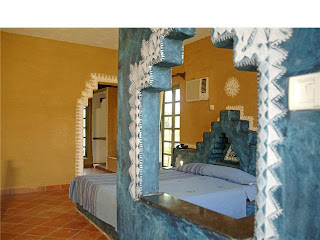
It is a wonderful experience to be at Kanha National Park in Central India. This 2000 sq km park teems with wildlife and its biodiversity overwhelms. When I first visited Kanha in the year nineteen seventy one it was on the verge of recovery from past depredation and reckless hunting that took place earlier.
Most timely conservation effort was an endeavor to save the Hard Ground Barasingha or Swamp Deer (Cervus duavcelli branderi) by George Schaller and the park management. From just + - sixty six animals to a population of around 350 + now is indeed a remarkable recovery for this sensitive and fragile animal. Incidentally as the manager of "The Celebration Van Vilas Kanha" wildlife resort informed me that Kanha is famous for saving this rare species which is a unique endeavor - the tiger comes second to contribute to Kanha's fame.
The deer is indeed an epitome of magnificence and far surpasses all wild animals in terms of beauty and grace. It is a gentle creature as it's appearance suggests and a silent one as well except in the mating season in November and December. During the rut the male deers vocalize almost continuously to attract the females. Their multi-tined horns (Twelve horned deer)are bedecked with tufts of fresh grass picked up from the ground to impress the females. The territorial fights to take over the females are common but hardly any blood shed or mortality takes place.
For those tourists interested in photographing this animal the best time is of course the rut. Most favored spots of the deer at Kanha is Kanha meadow, Bisanpura, Sondhar and Sonf where they breed.
Swamp deers like Bison are susceptible to rinderpest and foot and mouth disease which is transmitted by the cattle around the park. This deer is also totally dependent upon grasslands as it survives mostly on some species of grass found at Kanha.
But with proactive conservation measures in place the population of this endangered species is expected to grow in near future.








